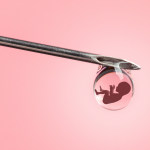The very idea of seeing a chiropractor while pregnant may still receive a few raised eyebrows but ask any women who has struggled through pregnancy with sciatic pain before visiting a chiropractor and they will describe their visit as life changing. Women receiving chiropractic care through their pregnancy constantly report a high level of satisfaction with treatment outcomes.
Pregnancy and birth is a journey many women will take during their lives as they plan and grow their family. Preparation both mentally and physically is an important aspect in supporting a positive and enjoyable experience. Chiropractic is a non-invasive, gentle and effective approach in supporting alignment and balance in the pelvis.
Education is important to empowering women to understand how their bodies are adapting during pregnancy. It is valuable to have a basic concept of what will be occurring in your pelvis during pregnancy and labour to appreciate why a chiropractor can provide such supportive and beneficial care.
Your pelvis has four joints which are surrounded by connective tissues called ligaments and tendons. The joints include:
- Sacroiliac joints (two, located at the back between the hip bones and the sacrum)
- Pubic Symphysis (located at the front)
- Sacrococcygeal (tailbone)
The female pelvis is wider and broader with a larger pelvic outlet to aid in the childbirth process. One of the more fascinating aspects of your pelvis is that these bones will move during labour. Your sacrum, the triangular bone between your hips will move backwards and in doing so will increase the diameter of your pelvis.
“The pelvis should be viewed as a dynamic structure in the birth process, and the facilitation of optimum expansion should be a key consideration of routine labour care” Trace Sanderson
When you understand the incredible innate actions that will occur in our amazingly built bodies to facilitate the birth process, it makes perfect sense to prioritise the alignment and correction function of the scaro-illiac joints and other pelvis structures. Chiropractic focuses on the correct alignment and function of the spine, pelvis and nervous system.
Chiropractors are specifically trained to detect, analyse and restore movement deficiencies throughout the spine and pelvis. These limitations or alignment issue have often developed through lifes slips, falls and repetitive tasks. In pregnant women, we utilise a specific technique of analysis called the Webster Technique. Using gentle adjustments to the sacrum or other surrounding ligaments our aim is to facilitate normal pelvis alignment and nervous system function.
To help restore any imbalances during pregnancy a chiropractor will use gentle adjustments, often utilising specialised tables, supports and techniques. Statistically, most pregnant women undergoing chiropractic treatment report a clinically relevant improvement. With minimal contra-indications to chiropractic care during your pregnancy, the health of you and your growing bub is always our priority.
The scaro-illiac joints can often be observed by the untrained eye by simply noticing the two dimples just above your bottom. Its not uncommon for women or their partners to notice one side being lower or dropped, often this becomes apparent when back pain at the start of pregnancy is being experienced. Symmetry of these joints and the surrounding muscle and ligaments is a key focus of chiropractic care in achieving a more comfortable pregnancy experience.
Relaxin is a hormone that does just that, it relaxes and loosen the ligaments, especially in the pelvic area. This will help accommodate the expansion of the growing baby. However, it should be noted that ligament laxity can make the pelvic bones very unstable and allow for easy misalignment which can be rather uncomfortable.
The number of women who experience low back pain and / or pelvis pain during pregnancy is as high as eighty percent. Musculoskeletal complaints like low back pain should be taken seriously, they can become persistent, affecting sleep and quality of life. Five of the most common complaints that we see in pregnancy are;
Low Back Pain
As your baby grows, your centre of gravity shifts and this leads to an increased curve in your lower back. Greater stress on the joints and soft tissues leads to pain and discomfort. This will likely also start to affect the way you walk and move around daily.
Sciatic Nerve Pain
Tight and reactive spasms in the muscle of your buttock region can irritate or compress the sciatic nerve during pregnancy. This can lead to debilitating pain down the back of the legs.
Sacro-illiac Pain
Traditionally a stable and robust weight bearing joint can become unstable due to hormonal changes. The increased mobility of the joint can affect alignment and place extra stress on surrounding ligaments, muscles, and tissues. It is often incorrectly described as hip pain.
Pubic Synthesis Pain
SPD for short, this condition produces intense pain and limitation in mobility. A grinding or clicking sound may be present as the relaxin hormone allows the pubic joint to move and separate.
Round Ligament Pain
These ligaments are responsible for connecting the uterus to the abdominal wall. As the uterus develops these ligaments will stretch and may cause sharp pains on either sides of the abdomen or where they attach to the pubic bones.
Pregnancy is an exciting time and wonderful expression of new life. The changes that will be occurring in your body are all natural, they are well designed and occur as nature intended. Our lifestyles and past injuries can influence how these innate changes work. If you are experiencing pain or simply wish to have your pelvis alignment checked it is always our privilege to work with expecting women.
Family Life Chiropractic
www.familylifechiropratic.com.au
0249654391
Sanderson TA. MIDIRS Midwifery Digest, vol 22, no 3, September 2012,
Walker JM (1992). The sacroiliac joint: a critical review. Physical Therapy 72(12):903-16
Sutton J (2000). Birth without active pushing. A physiological second stage of labour. Practising Midwife 3(4):32-4
McGrath MC (2004). Clinical considerations of sacroiliac joint anatomy: a review of function, motion and pain. Journal of Osteopathic Medicine 7(1):16-24
Drake RL, Vogl W, Mitchell AWM (2005). Gray’s anatomy for students. Philadelphia, PA: Elsevier/Churchill Livingstone.
Jacob HA, Kissling RO (1995). The mobility of the sacroiliac joints in healthy volunteers between 20 and 50 years of age. Clinical biomechanics 10(7):352-61
Lisi AJ. Chiropractic spinal manipulation for low back pain of pregnancy: a retrospective case series. J Midwifery Womens Health 2006; 51:7-10.
Stuber KJ, Wynd S, Weis CA. Adverse events from spinal manipulation in the pregnant and postpartum periods: a critical review of the literature. Chiropr Man Therap. 2012; 20:8.
George JW, Skaggs CD, Thompson PA, et al. A randomized controlled trial comparing a multimodal intervention and standard obstetrics care for low back and pelvic pain in pregnancy. Am J Obstet Gynecol 2013;208:295.e1-7.














